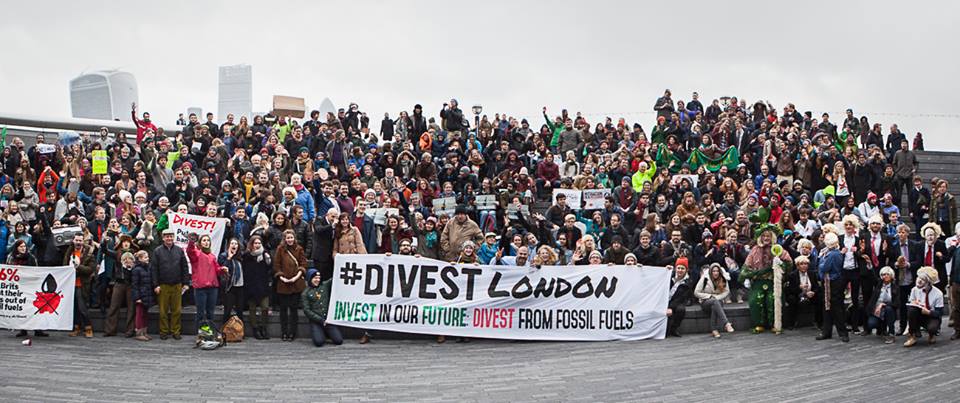
26th September 2016
The Carbon Budget
Bill McKibben recently published a sobering article on our remaining carbon budget, based on a new Oil Change International Report.
Bill explains that if we want to meet the target of a maximum 2°C rise in temperatures, then we can release/burn 800 gigatons of CO2. However, if we want to limit the temperature increase to the 1.5°C target agreed in Paris in 2015, then we can only emit 353 gigatons of CO2 (this is a conservative estimate, which will only give us a 50% chance of meeting the target). Our problem arises because the existing coal fields, oil wells and gas fields in operation will produce 942 gigatons of CO2 assuming all of the fossil fuels are extracted and used.
We are therefore left in a situation where we can only afford to use approximately one third of fossil fuels from all fields and wells in operation, if we want to try and stave of the worst impacts of climate change and limit the global average rise in temperatures to 1.5°C. In addition, no government anywhere on the planet can allow a new coal field, oil well or gas field to be approved. This poses a monumental challenge, as fossil fuel companies want to extract every last unit of fossil fuel they can get their hands on. But supposing our political leaders stick to their word and enforce the 1.5°C target, then our leaders are going to have to be brave and tell the fossil fuel companies, who just happen to be some of the wealthiest and most powerful companies in the world, that they can only extract and sell around one third of existing fossil fuels from fields and wells that are in operation. This brings us neatly on to the next point – the carbon bubble.
The Carbon Bubble
Broadly speaking, the share value of fossil fuel companies are based on the assumption that all coal, oil and gas in existing fields and wells will be extracted and burned. However, as we have seen if we are to stand any chance of meeting the 1.5°C target, then we can only extract and burn one third of existing reserves. As such, there is a significant amount of ‘unburnable carbon’, which some experts refer to as ‘stranded assets’.
Assuming there is no uptake in carbon capture and storage technology, then the true value of shares at fossil fuels companies could be as low as one third of their current valuations. The current estimates of share value are therefore unrealistic and assume ‘business as usual’ scenarios, with little to no assumptions for future climate policies – this is what is known as the ‘carbon bubble’.
From an economics perspective, there is a fear that this could lead to a similar situation as the ‘housing bubble’, which contributed to the global recession in 2008. This is because a large number of private and public bodies have invested their funds in big oil and gas companies, as they’ve traditionally been seen as a safe bet. The type of organisations who have invested in fossil fuel company shares, include:
- Government organisations (including local authorities)
- Faith based groups
- Foundations
- Universities and colleges
- Pension funds (this is a massive worry – if share values plummet to reflect their true value in light of climate change policies, then what happens to people’s pension pots?)
- NGOs
A whole new movement has started up to encourage ‘divestment’ from fossil fuel companies, which is based on a moral imperative to act on climate change, but also a financial imperative to protect pension funds and university funds, from potentially massive losses should the ‘carbon bubble’ burst and share values tumble.
The excellent US based NGO founded by Bill McKibben, 350.org, has put together a fantastic resource called ‘Go Fossil Free’. On their website, you can join or start your own divestment group, and you can also view some of the 630 organisations who have divested $3.4 trillion from fossil fuel companies so far, which include:
- Rockefeller Brothers Fund
- University Glasgow
- Guardian Media Group
- Oslo Pensjonsforsikring
- Anglican churches from around the world
- British Medical Association
- City of Cambridge, MA (USA)
- Newcastle University
- Quakers in Britain
- Sheffield Hallam University
- University of Hawaii
- University of Southampton
For a full list, please see: http://gofossilfree.org/commitments/
Summary
The figures are simple:
- We have 942 gigatons of CO2 that we intend to emit from current fields and wells.
- We can only emit 353 gigatons of CO2 at the very most to avoid the worst impacts of climate change.
Regardless of what you believe about climate change and even if you were to ignore the moral imperative to take action, there is still a strong financial argument to move your money away from fossil fuels. Should you feel so inclined, you might want to look at where your pension provider has invested their funds and if you’re unhappy with their choice – let them know!
We appear to have a tiny amount of leeway with our remaining carbon budget, but we need to commence a ‘managed decline’ of fossil fuels starting now, transitioning to a cleaner and greener future.
Resources
Bill McKibben – “Recalculating the Climate Math”: https://newrepublic.com/article/136987/recalculating-climate-math
Go Fossil Free: http://gofossilfree.org/
Oil Change International Report – “The Sky’s Limit: Why the Paris Climate Goals Require a Managed Decline of Fossil Fuel Production”: http://priceofoil.org/2016/09/22/the-skys-limit-report/
My new cli-fi children’s picture book is Nanook and the Melting Arctic. Nanook is a caring polar bear who lives in the Arctic. But when his igloo starts melting, Nanook must find a way to save his friends and his home. He knows that the people who can help are also those who’ve caused the problem and he must find a way to convince leaders to act on the climate crisis. You can purchase Nanook from Amazon’s global stores including Amazon UK and Amazon US.